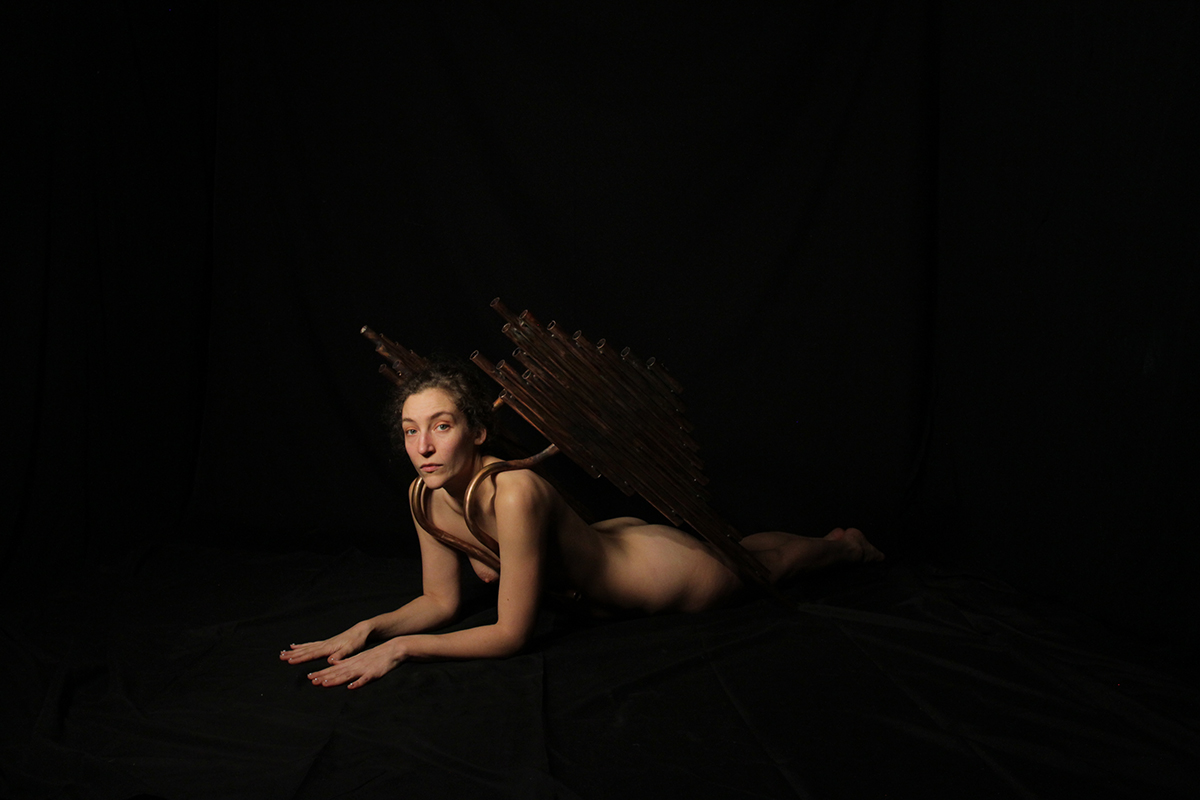
Styx, 2021 © Alix Marie
French photographer Alix Marie looks to mythology once again as a source of inspiration
Perhaps more so amid recent restrictions, concepts of ‘boundary’ have long proved popular among artists – particularly for the subversive potential which exists in testing, interrogating, and breaking them. Recognised as one of the twenty-first century’s leading women in photography, Alix Marie is unafraid to question the limitations of her art.
At the Ballarat International Foto Biennale (BIFB), Australia, she presents a new work in partnership with Photoworks which examines bodily representation via an expansive definition of photography, challenging perceptions of what modern photography is, and what it can reveal.
Now in its 16th year, the BIFB has enriched the cultural landscape of regional Victoria and become one of the most significant photographic arts festivals in Australia, attracting a plethora of established artists.
The full program of more than 170 artists across 100 venues has recently been revealed, including 25 Australian premieres – most of which are exclusive to Ballarat.
Among the premieres is Alix’s Styx, a project which references the rich history and intertextuality of Greek mythology. In this new solo exhibition, Alix explores her interest in Greek water deities – specifically the Oceanids. The daughters of Oceanus – the Titan God of the river which encircled Earth – and Tethys, Titan goddess of the sea, the Oceanids were said to be almost innumerable, and diverse in their power and roles.
Styx, for whom Alix’s work is named, was a Greek Oceanid who represented the boundary between the Earth and the Underworld. Arranged across several spaces, Alix’s work enables the viewer to traverse these boundaries and access alternative planes of perception.
The first room of the work features an immersive installation comprising found X-ray images, transferred to large translucent fabrics via the cyanotype procedure. Pioneered by legendary photographers such as Anna Atkins, the cyanotype is experiencing a resurgence – its use is prevalent among the work of several women in photography today, such as Contemporary Heroines Gohar Dashti and Joy Gregory.
Alix’s experimental application of the cyanotype technique – which is one of the earliest photographic processes – deepens Styx’s historical associations, while the integration of more modern X-ray technology emphasises the innovation of her approach.
In a second room, Alix represents Styx herself in human form, in a projection where the deity is embodied by the performer Nina Boukhrief, one of Alix’s long-term collaborators.
In this carefully composed image, Nina wears a set of hand-crafted copper wings, a reference to Ballarat’s own history of the gold rush. The wings possess a sculptural quality, a hallmark of Alix’s practice.
Concerning this year’s festival programme, Fiona Sweet, Ballarat International Foto Biennale Artistic Director, has stated, “In the last year there have been many moments when the past and future seem to collapse and the immediacy of the here and now dominates.’
Through Alix’s remarkable work, the boundaries between past and present, Earth and Underworld, are artfully diminished. As X-rays look beneath the the skin, and Styx gazes directly towards her audience, Styx exemplifies the ways in which photography can amalgamate past and present, representing the body with an immediacy which is at once fragile and defiant.
According to Fiona, such juxtaposition will define the BIFB at large; in her words, visiting audiences can expect to witness ‘the photographic artists of the 9th Biennale work with the ferociousness of existence, marking the singular moments and ideas that punctuate and transcend time.”
By Katherine Riley
Please note: A recently announced lockdown in Victoria has delayed the opening of the BIFB festival. Styx is scheduled to be on display at the National Centre For Photography in Ballarat, Australia, when restrictions are eased; for more information, please see the Ballarat Foto website.











